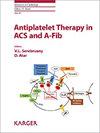Optimal management of combined dyslipidemia: what have we behind statins monotherapy?
引用次数: 44
Abstract
Evidence of the effectiveness of 3-hydroxy-3-methylglutaryl coenzyme A reductase inhibitors (statins) within continuum of atherothrombotic conditions and particularly in the treatment and prevention of coronary heart disease (CHD) is well established. Large-scale, randomized, prospective trials involving patients with CHD have shown that statins reduce the clinical consequences of atherosclerosis, including cardiovascular deaths, nonfatal myocardial infarction and stroke, hospitalization for acute coronary syndrome and heart failure, as well as the need for coronary revascularization. Direct testing of varying degrees of low-density lipoprotein (LDL)- cholesterol lowering has now been carried out in 4 large outcomes trials: PROVE IT-TIMI 22, A to Z, TNT and IDEAL. However, the question whether more aggressive LDL-cholesterol lowering by high-dose statins monotherapy is an appropriate strategy is still open: higher doses of statins are more effective mainly for the prevention of the nonfatal cardiovascular events but such doses are associated with an increase in hepatotoxicity, myopathy and concerns regarding noncardiovascular death. Moreover, despite the increasing use of statins, a significant number of coronary events still occur and many such events take place in patients presenting with type 2 diabetes and metabolic syndrome. More and more attention is now being paid to combined atherogenic dyslipidemia which typically presented in patients with type 2 diabetes and metabolic syndrome. This mixed dyslipidemia (or 'lipid quartet') - hypertriglyceridemia, low high-density lipoprotein (HDL)-cholesterol levels, a preponderance of small, dense LDL particles and an accumulation of cholesterol-rich remnant particles - emerged as the greatest 'competitor' of LDL-cholesterol among lipid risk factors for cardiovascular disease. Most recent extensions of the fibrates trials (BIP, HHS, VAHIT and FIELD) give further support to the hypothesis that patients with insulin-resistant syndromes such as diabetes and/or metabolic syndrome might be the ones to derive the most benefit from therapy with fibrates. However, different fibrates may have a somewhat different spectrum of effects. Other lipid-modifying strategies included using of niacin, ezetimibe, bile acid sequestrants, CETP inhibitors and omega-3 fatty acids. Particularly, ezetimibe/statins combinations provide superior lipid-modifying benefits compared Tenenbaum/Fisman/Motro/Adler 128 with any statins monotherapy in patients with atherogenic dyslipidemia. Atherogenic dyslipidemia is associated with increased levels of chylomicrons and their remnants containing 3 main components: apolipoprotein B-48, triglycerides and cholesterol ester of intestinal origin. Reduction in accessibility for one of them (specifically cholesteryl ester lessening due to ezetimibe administration) could lead to a decrease of the entire production of chylomicrons and result in a decrease of the hepatic body triglycerides pool as confirmed in number of clinical studies. However, the ENHANCE study showed no difference in the progression of carotid atherosclerosis between ezetimibe/simvastatin vs. simvastatin alone over a 2-year period. Conclusions regarding ezetimibe/statins combinations should not be made until the three large clinical outcome trials will be completed within the next 2-3 years. In addition, bezafibrate as a pan-PPAR activator has clearly demonstrated beneficial pleiotropic effects related to glucose metabolism, insulin sensitivity and pancreatic beta cell protection. Because fibrates, niacin, ezetimibe, omega-3 fatty acids and statins each regulate serum lipids by different mechanisms, combination therapy - selected on the basis of their safety and effectiveness, could be more helpful in achieving a comprehensive lipid control as compared with statins monotherapy.联合血脂异常的最佳管理:他汀类药物单药治疗的结果是什么?
3-羟基-3-甲基戊二酰辅酶A还原酶抑制剂(他汀类药物)在动脉粥样硬化性血栓形成条件下,特别是在治疗和预防冠心病(CHD)方面的有效性的证据已经得到充分证实。涉及冠心病患者的大规模、随机、前瞻性试验表明,他汀类药物可减少动脉粥样硬化的临床后果,包括心血管死亡、非致死性心肌梗死和中风、急性冠状动脉综合征和心力衰竭的住院治疗,以及冠状动脉血管重建术的需要。直接检测不同程度的低密度脂蛋白(LDL)-降低胆固醇现已在4个大型结果试验中进行:PROVE IT-TIMI 22, A to Z, TNT和IDEAL。然而,通过高剂量他汀类药物单药治疗更积极地降低ldl -胆固醇是否是一种合适的策略仍然存在疑问:高剂量他汀类药物主要对预防非致命性心血管事件更有效,但这种剂量与肝毒性、肌病和非心血管死亡的增加有关。此外,尽管他汀类药物的使用越来越多,但仍有大量冠状动脉事件发生,其中许多事件发生在2型糖尿病和代谢综合征患者中。合并动脉粥样硬化性血脂异常通常出现在2型糖尿病和代谢综合征患者中,目前越来越受到人们的关注。这种混合性血脂异常(或“脂质四重奏”)——高甘油三酯血症、低高密度脂蛋白(HDL)-胆固醇水平、小而致密的LDL颗粒的优势和富含胆固醇的残余颗粒的积累——在心血管疾病的脂质危险因素中成为LDL-胆固醇最大的“竞争者”。最近贝特类试验的扩展(BIP, HHS, VAHIT和FIELD)进一步支持了胰岛素抵抗综合征(如糖尿病和/或代谢综合征)患者可能从贝特类治疗中获益最多的假设。然而,不同的贝特类药物可能会有不同的效果。其他脂质调节策略包括使用烟酸、依折麦布、胆汁酸隔离剂、CETP抑制剂和omega-3脂肪酸。特别是,与Tenenbaum/Fisman/Motro/Adler 128相比,ezetimibe/他汀类药物联合治疗在动脉粥样硬化性血脂异常患者中具有更好的降脂效果。动脉粥样硬化性血脂异常与乳糜微粒及其残余物含量增加有关,其中含有3种主要成分:载脂蛋白B-48、甘油三酯和肠源胆固醇酯。其中一种药物的可及性降低(特别是依折替米贝导致的胆固醇酯降低)可能导致乳糜微粒的整体产生减少,并导致肝体甘油三酯池的减少,这在许多临床研究中得到了证实。然而,ENHANCE研究显示,在2年的时间里,依折替贝/辛伐他汀与单独使用辛伐他汀在颈动脉粥样硬化的进展方面没有差异。在未来2-3年内完成三项大型临床结果试验之前,不应就依折替贝/他汀类药物联合用药得出结论。此外,贝扎贝特作为一种泛ppar激活剂已经清楚地显示出与葡萄糖代谢、胰岛素敏感性和胰腺细胞保护有关的有益的多效性作用。由于贝特类、烟酸、依折替米贝、omega-3脂肪酸和他汀类药物各自通过不同的机制调节血脂,因此根据其安全性和有效性选择联合治疗,与他汀类药物单独治疗相比,可能更有助于实现全面的血脂控制。
本文章由计算机程序翻译,如有差异,请以英文原文为准。
求助全文
约1分钟内获得全文
求助全文

 求助内容:
求助内容: 应助结果提醒方式:
应助结果提醒方式:


